I would like to check if my code is correct for this
32 bits data_in
7 bits CRC
Please help me check and if possible explain me how does this code works.
library ieee;
use ieee.std_logic_1164.all;
entity CRC7_32 is
port (data_in : in std_logic_vector (31 downto 0);
crc_en , rst, clk : in std_logic;
crc_out : out std_logic_vector (6 downto 0));
end CRC7_32;
architecture behavior of CRC7_32 is
signal crc_block: std_logic_vector (6 downto 0);
signal crc_next_state: std_logic_vector (6 downto 0);
begin
crc_out <= crc_block;
crc_next_state(0) <= crc_block(5) xor crc_block(6) xor data_in(0) xor data_in(4) xor data_in(7) xor data_in(8) xor data_in(12) xor data_in(14) xor data_in(15) xor data_in(16) xor data_in(18) xor data_in(20) xor data_in(21) xor data_in(23) xor data_in(24) xor data_in(30) xor data_in(31);
crc_next_state(1) <= crc_block(6) xor crc_block(0) xor data_in(1) xor data_in(5) xor data_in(8) xor data_in(9) xor data_in(13) xor data_in(15) xor data_in(16) xor data_in(17) xor data_in(19) xor data_in(21) xor data_in(22) xor data_in(24) xor data_in(25) xor data_in(31);
crc_next_state(2) <= crc_block(0) xor crc_block(1) xor data_in(2) xor data_in(6) xor data_in(9) xor data_in(10) xor data_in(14) xor data_in(16) xor data_in(17) xor data_in(18) xor data_in(20) xor data_in(22) xor data_in(23) xor data_in(25) xor data_in(26);
crc_next_state(3) <= crc_block(1) xor crc_block(2) xor crc_block(5) xor crc_block(6) xor data_in(0) xor data_in(3) xor data_in(4) xor data_in(8) xor data_in(10) xor data_in(11) xor data_in(12) xor data_in(14) xor data_in(16) xor data_in(17) xor data_in(19) xor data_in(20) xor data_in(26) xor data_in(27) xor data_in(30) xor data_in(31);
crc_next_state(4) <= crc_block(2) xor crc_block(3) xor crc_block(6) xor data_in(1) xor data_in(4) xor data_in(5) xor data_in(9) xor data_in(11) xor data_in(12) xor data_in(13) xor data_in(15) xor data_in(17) xor data_in(18) xor data_in(20) xor data_in(21) xor data_in(27) xor data_in(28) xor data_in(31);
crc_next_state(5) <= crc_block(3) xor crc_block(4) xor data_in(2) xor data_in(5) xor data_in(6) xor data_in(10) xor data_in(12) xor data_in(13) xor data_in(14) xor data_in(16) xor data_in(18) xor data_in(19) xor data_in(21) xor data_in(22) xor data_in(28) xor data_in(29);
crc_next_state(6) <= crc_block(4) xor crc_block(5) xor data_in(3) xor data_in(6) xor data_in(7) xor data_in(11) xor data_in(13) xor data_in(14) xor data_in(15) xor data_in(17) xor data_in(19) xor data_in(20) xor data_in(22) xor data_in(23) xor data_in(29) xor data_in(30);
process (clk,rst)
begin
if (rst = '1') then
crc_block <= b"0000000";
elsif (clk'EVENT and clk = '1') then
if (crc_en = '1') then
crc_block <= crc_next_state;
end if;
end if;
end process;
end architecture behavior;
